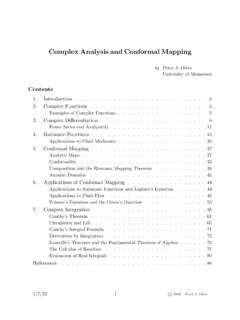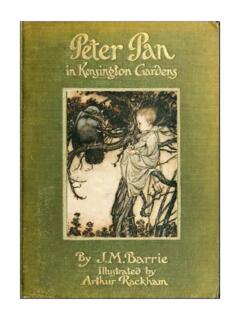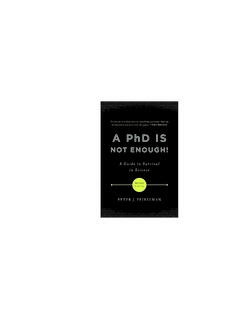Transcription of The Cambridge Grammar of the English Language. By …
1 Review Article The Cambridge Grammar of the English Language. By Rodney Huddleston and Geoffrey K. Pullum. Cambridge : Cambridge University Press, 2002. Pp. xvii, 1842. Reviewed by peter W. Culicover, The Ohio State University*. 1. Introduction. The Cambridge Grammar of the English Language (CGEL) is a monumentally impressive piece of Already published reviews of this work do not overstate its virtues2: a notable achievement'; authoritative, interesting, reasonably priced (for a book of this size), beautifully designed, well proofread, and enjoyable to handle'; superbly produced and designed'.
2 One of the most superb works of academic scholarship ever to appear on the English linguistics scene a monumental work that offers easily the most comprehensive and thought-provoking treatment of English Grammar to date. Nothing rivals this work, with respect to breadth, depth and consistency of coverage'. I fully agree with these sentiments. Huddleston, Pullum and their collaborators definitely deserve a prize for this I try to convey here a sense of what it feels like to work with and through CGEL, and what one might plausibly conclude from this exercise about how language works.
3 I also outline the theory of Grammar that is explicit and implicit in CGEL and speculate a bit on what we might conclude from this theory about what it means to know a language. In particular, I explore the possibility that CGEL is actually the basis for a complete 1. description of the knowledge that a native speaker of English has of English , and the consequences of that possibility. 2. What is in CGEL. CGEL is organized into twenty chapters: Ch. 1 Preliminaries', Ch. 2 Syntactic overview', Ch. 3 The verb', Ch. 4 The clause: complements', Ch. 5. Nouns and noun phrases', Ch.
4 6 Adjectives and adverbs', Ch. 7 Prepositions and preposition phrases', Ch. 8 The clause: adjuncts', Ch. 9 Negation', Ch. 10 Clause type and illocutionary force', Ch. 11 Content clauses and reported speech', Ch. 12 Relative constructions and unbounded dependencies', Ch. 13 Comparative constructions', Ch. 14. Non-finite and verbless clauses', Ch. 15 Coordination and supplementation', Ch. 16. Information packaging', Ch. 17 Deixis and anaphora', Ch. 18 Inflectional morphology and related matters', Ch. 19 Lexical word-formation', Ch. 20 Punctuation'.4.
5 CGEL is similar in its organization to the work that it aims to supplant, Quirk, et al. 1985 (Q85). Although the two are of roughly the same length (Q85 has 1789 pages and CGEL 1859), Q85 feels almost superficial compared with CGEL. The level of detail of CGEL is such that the reader may begin to feel that s/he is being told everything that one could possibly know about the topics that it covers. And while common sense tells us that this cannot be, in many cases it is difficult to think of what else one would want to say in factual terms about a particular construction, or form.
6 (Theoretical excursions are something else entirely, of course.) There were only a few points here and there that I. felt could have been mentioned but were not; further research almost invariably showed that they were in fact covered somewhere in the text. introduces a number of critical points that guide the approach throughout. There is a basic introduction to the concepts of constituent structure and syntactic (lexical 2. and phrasal) categories. The typical clause is composed of a noun phrase followed by a verb phrase. Crucially, each constituent of a phrase has not only a category, but a grammatical function.
7 These are represented simultaneously on a phrase marker, as in (1) (26:[13]). (1). NP. Det: Head: D N. some children Here, some is of the syntactic category D(eterminative), and bears the grammatical function Determiner in the phrase, while children is of the category N(oun), and bears the grammatical function Head of the phrase. Other functions include Subject, Predicate, and Object. In the view of CGEL, syntactic categories are determined strictly by formal and distributional criteria; function is completely The distinction is of course not novel, and is even found in some theoretical work (cf.)
8 Specifier and Complement in Chomsky 1972), but CGEL observes it rigorously, in the easy cases and in the hard cases. Sometimes the results are familiar, sometimes they are quite novel. For example, pre- head adjectives are modifiers (happy dog), pre-head nouns are modifiers (biology syllabus), and they are of different syntactic categories (537). The, a, this, that, some, etc. are determinatives, not adjectives, on the basis of their distributional characteristics;. so are many, few, much and little (539). In a sleeping child, sleeping is a verb since it 3.
9 Cannot function as a predicative adjective, in contrast to disturbing in some disturbing news. Similarly for pre-head heard and worried (541). Clausal complements are not NP. objects. The reasons: (i) V PP S is canonical, V PP NP is not, (ii) Some verbs take only S, not NP: marvel, vouch, wonder, charge, (iii) V P NP is grammatical, while V P S is not. Pursuing the logic of categorization, CGEL argues that the prepositions that head phrases like before I got home are just that, prepositions, and not traditional subordinating conjunctions'. They argue that just as remember is a verb regardless of whether it takes an NP complement or a clause complement, so after is a preposition (600).
10 Then, given that prepositions take such complements, and are not nouns or verbs, and are the heads of phrases that function as adjuncts, CGEL arrives at the conclusion that there are many prepositions besides the familiar before, after, in, to, at, on and so on. There are intransitive prepositions, such as downstairs, prepositions derived from adjectives, such as opposite, ahead, contrary, and prepositions derived from verbs, such as owing (to), barring, counting, including, excluding, given, concerning, provided, etc. (606-610). And while one might not initially be inclined to say that barring, as in barring accidents for example, is a preposition, it is hard to argue with the distributional facts.







